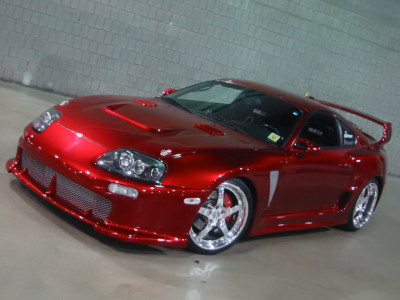 While we'll have to wait for the Paris Motor Show at the end of the month to get up close and personal with the all-new, second generation CLS sports sedan, Mercedes-Benz today released info on the available engine range and pricing for the European market. Furthermore, the Stuttgart automaker said that as of now, European buyers can place their order for the new CLS at the firm's sales partners.
While we'll have to wait for the Paris Motor Show at the end of the month to get up close and personal with the all-new, second generation CLS sports sedan, Mercedes-Benz today released info on the available engine range and pricing for the European market. Furthermore, the Stuttgart automaker said that as of now, European buyers can place their order for the new CLS at the firm's sales partners.
At launch, there will be two V6 models available; the CLS 350 CDI BlueEFFICIENCY with a 265HP diesel unit and the CLS 350 BlueEFFICIENCY with a 306HP 3.5-liter gasoline engine featuring ECO start/stop tech as standard. In Germany, prices are set at €63,427 and €64,617, respectively, with first deliveries to be shipped to European dealers in January 2011.
From March 2011, the range will be expanded with the CLS 250 CDI BlueEFFICIENCY powered by a 204HP 2.1-liter four-cylinder turbocharged diesel that returns a combined fuel economy of 5.1lt/100km (equal to 46.1mpg US / 55.4mpg UK) and to CO2 emissions of just 134 g/km. Pricing starts from €59,857.
In December 2010, European buyers will be able to order the CLS 500 BlueEFFICIENCY with a 408HP V8 gasoline unit, with first deliveries commencing in April 2011.
All 2011 CLS models will come equipped with Merc's 7G-TRONIC PLUS automatic transmission as standard.
For the first year of production, Mercedes-Benz will offer a special package called "Edition 1" priced from €6,664, which includes matt exterior paintwork in manganite grey SHAPE, shimmering metallic leather upholstery designo corteccia pearl, floormats with "Edition 1" lettering, black designo roof liner and aluminium pedals.
For the interior trim elements in the "Edition 1", Mercedes offers a choice between poplar light-brown satin, ash black high-gloss or, as an optional extra, AMG Carbon priced at a hefty €10,115.
An AMG version of the CLS powered by the German automaker's new 5.5-liter twin-turbo V8 with at least 536-ponies will follow within the next year or so.
 ________________________________________________________________
________________________________________________________________


































